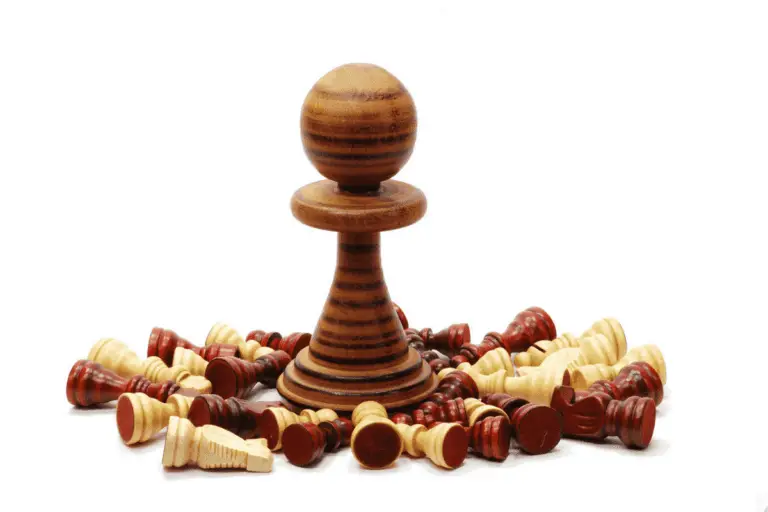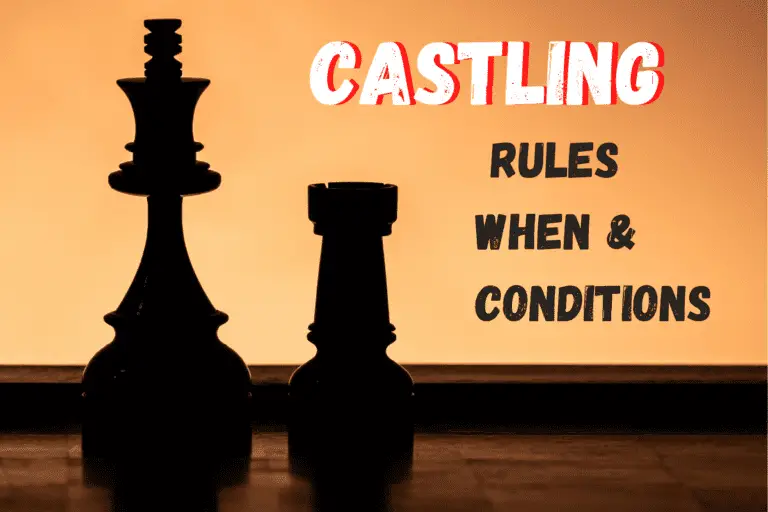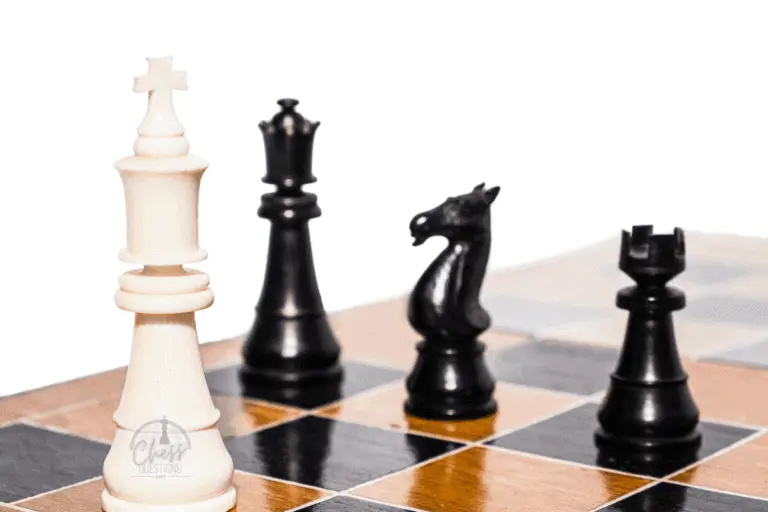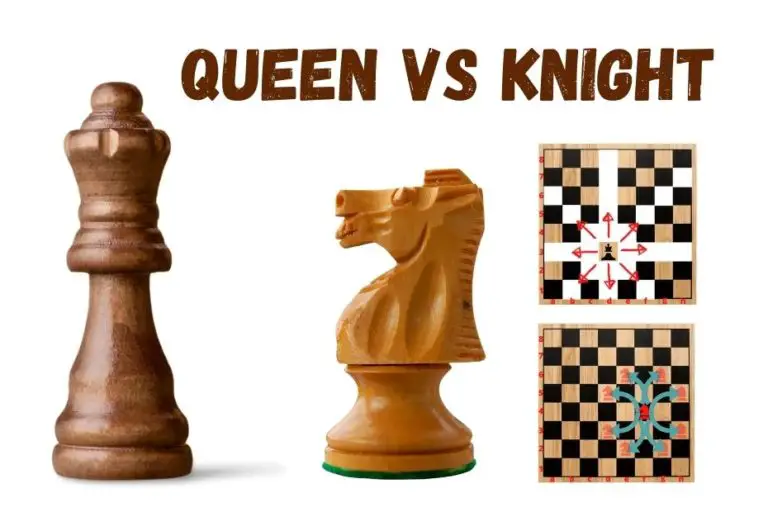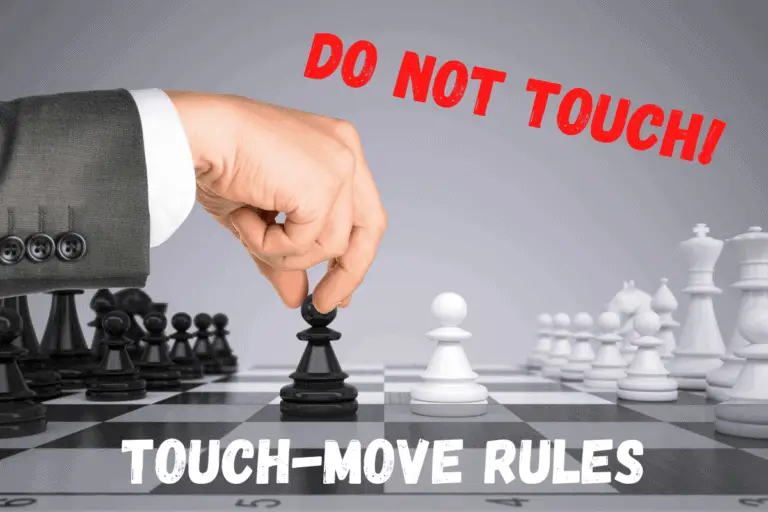Stalemate in Chess: Rules, Tips & Pieces to Avoid
⭐⭐⭐ Take 8 minutes to read and improve your chess game ➡️ : This article was first published on, and is Copyright of Chessquestions.com
Some players might be familiar with how they feel like they’re winning, only to find themselves in a stalemate position and getting an undesired draw instead of the win. I am going to take a look at the rules and provide tips on which pieces are most likely to cause a stalemate in chess.
In chess, the stalemate is a position where one player has no legal moves available and they are not in check. A Stalemate dictates a game ends a draw with a half-point awarded to each player. A stalemate can be forced by a losing player to gain a draw in a game that otherwise looked lost.
So let’s take a closer look and build some knowledge about stalemates.
Chess Stalemate Rules
Stalemate is described above, but here is the official completion of game rule in Article 5.2 a in the FIDE Laws of Chess pdf.
5.2 a. The game is drawn when the player to move has no legal move and his king is not in check. The game is said to end in ‘stalemate’. This immediately ends the game, provided that the move producing the stalemate position was legal.
You have doubt over the clarity of stalemate in the rules of chess now
The 3 Things That Determine Unavoidable Stalemate
- The King Can Not Move without Being in Checkmate
- No Other Pieces (If Available) Can Move**
- Certain combinations of remaining pieces on both sides
The 3 Combinations Pieces that will cause a stalemate
If your opponent has only a bare king left, there are combinations of pieces that deem the possibility of a stalemate 100% thanks to the chess rules of how chess pieces move and the situation of insufficient pieces with which to checkmate.
These three situations can not achieve checkmate and therefore the game will be deemed a draw by stalemate the moment these remaining pieces are the only ones left on the chess board.
1. King and Knight
The enemy king can always escape from check with the Knight due to its unique movement not being able to checkmate
2. King and Two Knights
Even with a second knight on the board, if you only have those two minor pieces, they are able to work together to put a King into check but can not prevent the King from escaping
3. King and Bishop
Because a bishop is limited only one color square, even partnering with the King, it is not possible to checkmate the opposing King
How Blocking Pawns Can Lose You a Winning Position in Chess
**Be careful in the end game if you are in a strong position and attacking the enemy King for Checkmate. You may wonder why your opponent is not resigning. The chances are he has spotted that you have his available pieces, probably a pawn or two, blocked from promoting and therefore moving, leaving the opportunity to force a stalemate and gain something from what would otherwise be a lost game.
How Beginners Lose Winning Positions with Stalemate
Inexperienced chess players may be familiar with the stalemate rule but have yet to hone their skills of foresight of it happening to them even though they could be in a strong position on the board. or at least what looks to be. The blocking pawn scenario is the most common reason, as they know they do not put the king in check but are trying to move towards it, forgetting that the other enemy pieces are blocked.
To avoid this, beginner players should set a mental routine to try to visualize the possible moves and stalemate rule before they make a move.
A Stalemate Can Be a Good Result for Some Players – But How?
If you are the player in a disadvantageous position with the strength of materials, successfully forcing a stalemate can be a good result for you. In fact, it could be the difference between winning or losing a match!
Whilst you might think this area of making a comeback in chess to gain a draw would be the reserve of either the lucky player, against an inexperienced newbie, you’d be wrong. The possibility of stalemate exists, and if you are skilled enough, you can make it happen.
At the very highest level in chess, two competing grandmasters have had stalemates. A stalemate in a chess game between two grandmasters is not a common occurrence, but it has happened and will happen again.
Using a decoy is one way a grandmaster match has ended in a stalemate, how frustrating for the player who was on the end of that clever move.
How to Play for Stalemate from a Losing Position
If you find yourself down to the bare minimum of materials but do perhaps have managed to retain a pawn that your opponent has considered little threat, try to edge it toward a promotion. With any luck, your opponent will have a piece they feel is not so much disposable, but not needed in his end-game attack, and will block your pawn from making any further progress toward the eighth rank and possible promotion.
The beauty in this situation is that you then become limited to being able to move only your King. If your opponent is not as skilled as they might be, they could make a mistake and create a stalemate and hand you a half-point draw on a plate.
How Time Controls Work in your Favor when Trying to Play for Stalemate.
Run that clock down if you are in a time-controlled game or playing bullet chess.
Really get your opponent thinking about the next move, or better still some random move you just made, that gets them spending time wondering why you made it. When time gets limited toward the end of a bullet chess game, thinking time is limited and it is more likely that a mistake forcing a stalemate will occur especially in rook endgames when grabbing that checkmate is tricky.
Even better, his time will run out and you will win the game on time – I’ve never had a really sweet feeling of winning games this way, but when you are totally under the cosh and down on material and your opponent just can’t put it to bed, you do have to think it is their own fault
9 Tips on How to Avoid Stalemate
Follow these simple steps to stop a stalemate from happening in your chess game
1. Proceed with caution in the end game
While you may feel confident of being well up in material, be aware that your opponent may be adept at laying a trap and would very much welcome the idea of stalemate as the end of the game.
2. Be aware of any enemy blocked pawns if the King is the only other piece
If your opponent has a pawn or two heading for promotion, be careful when blocking them. try to leave one free, and have the promotion covered, as it will offer you a lifeline should you block the kings movement without checking.
3. Beware of Movement limitation of the King from other material
While it is helpful to hem in the king with other pieces to limit the movement, it can also work against you, so be aware of what pieces the King is close to so that he does not get into a position that causes you to rush a move and stalemate
4. Assess every possible king move scenario based on where you want to move before you move.
If you are not up against time controls, or even if you are, pre-empt your opponent’s options before you move if not putting him in check. One lost position and you will lose the advantage and give the win away in exchange for a draw.
5. Second guess where your opponent will move as a result of yours.
You should be doing this as a matter of course throughout the game of chess anyway, but in the end game and impending checkmate, with stalemate possibilities, you should be even more aware of trying to mate in the least amount of moves.
6. Be Specially careful with 2 queens
There shouldn’t really be any need for a second queen to gain your checkmate, although there is no doubt, that it can also be a huge help – The other problem is, because of the range of movement across both rank and file, as well as the diagonals, it is quite easy to accidentally cause a stalemate whilst on the attack – So be super careful
7. Don’t watch the clock, Asses the board
When in time control games, especially bullet games, once you get to the end game, whilst you may be ahead if the clock is running under a minute for you to complete the checkmate, don’t watch the clock, concentrate hard on the board and as hard as it may sound to resist, don’t rush your moves.
8 Become an expert on checkmate moves
Do not think that just because you are up on material that you do not need to be an expert on checkmate – there is a strategy, there are patterns, and the sooner you learn, practice, and commit them to memory, the quicker you will be able to gain your checkmate, the win, the extra time and avoid the stalemate
9 Play some training puzzles
There is nothing better at helping you understand the dangers that a stalemate puzzle. They will offer some basic stalemate patterns to learn and solve to prepare you.
Can You Win With Stalemate in Chess?
In some versions of chess, a stalemate has deemed a win for the te player in stalemate. This is present in a game called ‘losing chess’, ‘antichess’ or ‘suicide chess’
Prior to the standardization of the rules to deem a stalemate a draw, the result of a stalemate could vary from game to game, regionally. In some cases, the stalemating player would be awarded the win as if a checkmate has been achieved. In fact, every possible outcome including an automatic loss for playing the stalemate, and the half win – The draw by stalemate rule was finally introduced in the 19th century to make the rules the same throughout the official chess world.
Not Everyone Agrees with the Stalemate Rules
[treating stalemate as a draw,] “is without historical foundation and irrational, and primarily responsible for a vast percentage of draws, and hence should be abolished”
Fred Reinfeld – American Chess Writer
Chess Stalemate vs Checkmate
If you have not figured it out yet and need further clarification of the difference between checkmate and stalemate, despite calls for the win to be awarded to the stalemating player, or whether you believe the stalemated player should be awarded the victory, the rules state that it is a draw and that makes it so much more different to the checkmate, therefore in closing, I will leave you with this..
Checkmate is when the King has a direct attack and cannot escape legally, by way of moving itself or blocking the check, whereas stalemate is when the King is not in check but can not move without being in check which is deemed an illegal move and therefore a stalemate.

